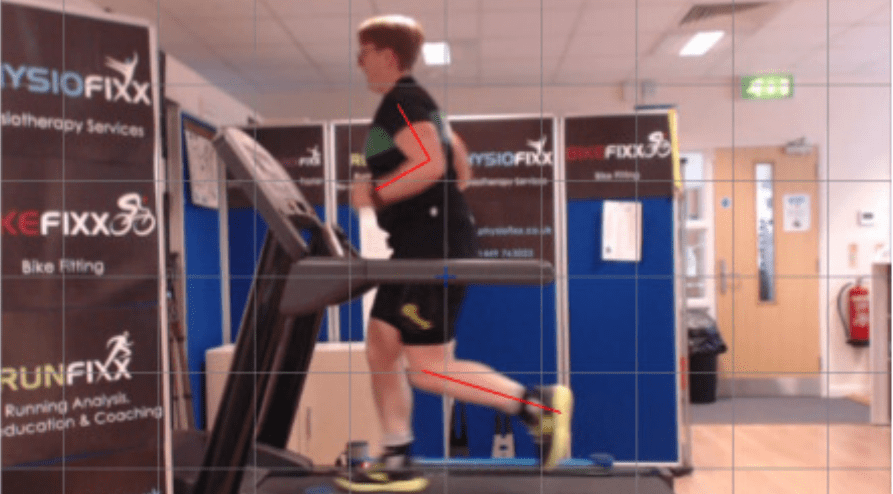Local to me, we have a great running analysis service provided by Physiofixx which I started in October 2021 to learn more about my gait and running style so that I could improve my form and hopefully get rid of these problems I was encountering!
The analysis took two parts - one focused on gait, and then focused on analysing my running form. I thought I'd share a bit of what I learned from these sessions, and how it's helping me to be a better runner.
Gait analysis
I've had gait analysis done before because I have completely collapsed arches (thanks to my Ehlers-Danlos Syndrome), and I wear insoles to recreate the arch that my ligaments can't, so it wasn't something new!
This part of the analysis involved standing, walking and running over a force plate both barefoot and in my trail running shoes with braces and insoles.
Static balance
The first thing we did was look at my static balance and where my weight was distributed through my feet in standing. Unsurprisingly, it was mostly distributed through my heels!
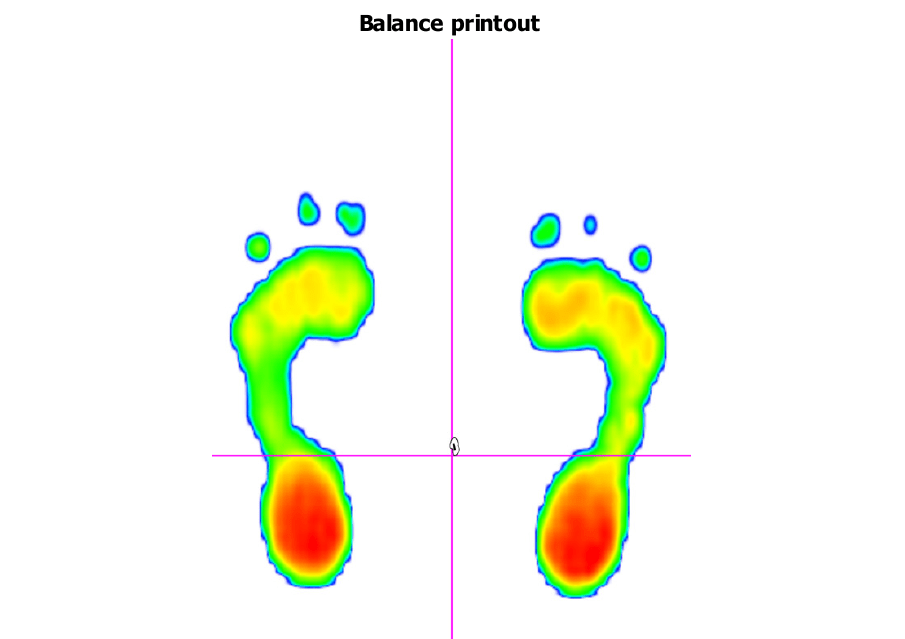
Walking and running barefoot
Next, we looked at walking and running in barefoot without braces, which felt very strange and a little uncomfortable!
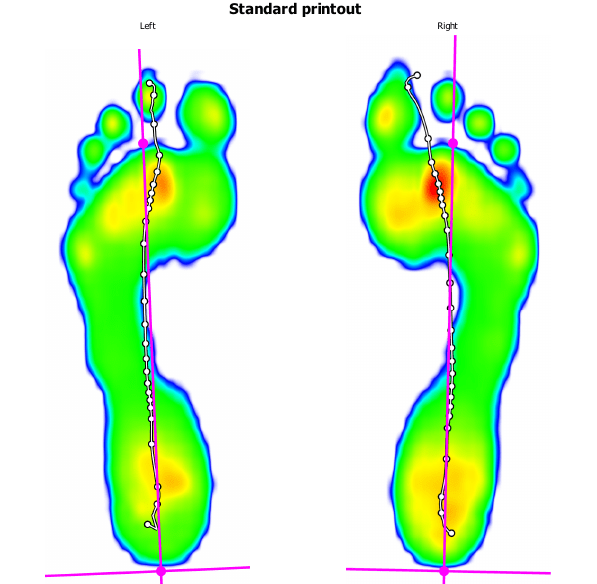
When I was walking, there was very little lateral roll - you would expect to see the line move to the left of the midline, then roll across the midline to the outer edge of the foot, and then curving back over the midline to end with a toe-off from the big toe. My right foot was marginally better than the left, but still a lot of room for improvement!
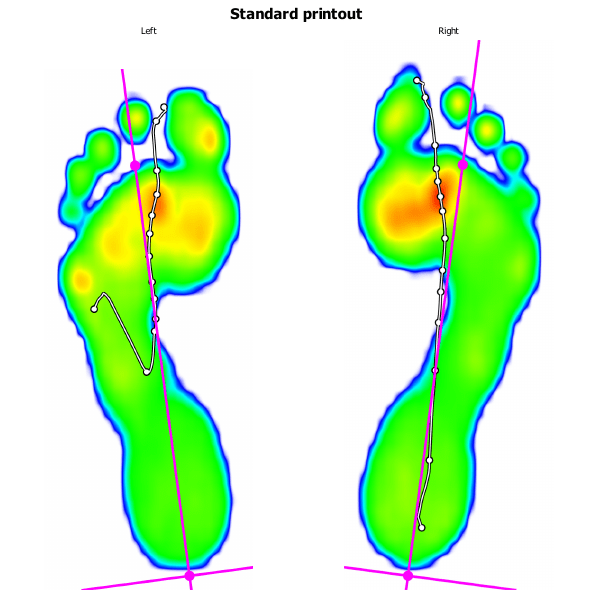
In barefoot running things were a little different in that there was little weight bearing through my heels, however the movement through my forefoot was pretty poor with very little roll at all, and as with walking, not really pushing off from my big toe.
Walking and running with insoles, shoes and braces
Next up was with my braces (Aircast A60s), insoles (custom made from the hospital orthotics team about 2 years ago) and my trail running shoes (Brooks Cascadias) which I wear most often.
In walking, there was a bit more of a roll across the midline, but still not anywhere near what you would expect to see.
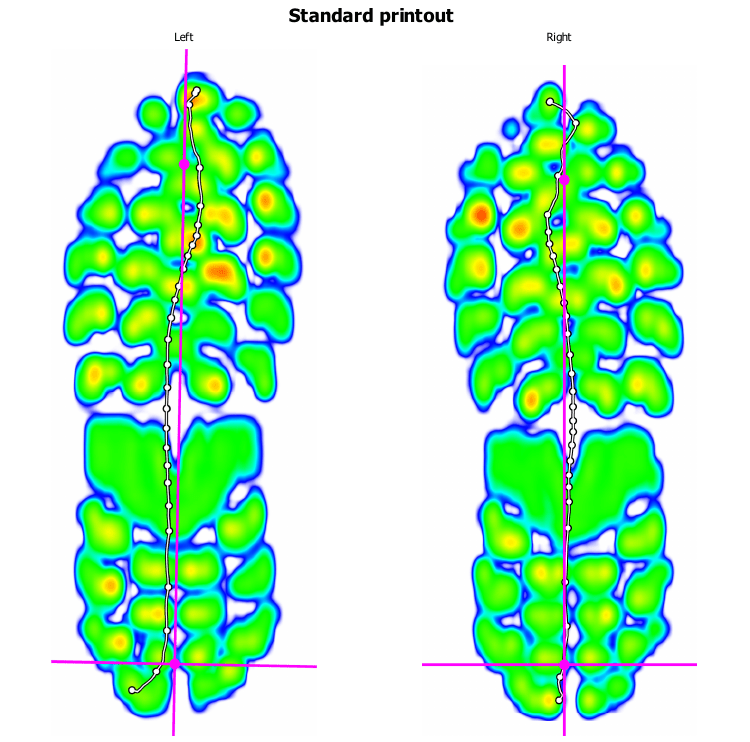
Running showed a much more pronounced roll, but still with the insoles and braces, the roll isn't what we would be expecting to see - suggesting that my insoles are probably not giving me enough support in the midfoot/arch to have my foot roll outwards at the start of the stance, back into the midline for mid-stance, and then roll inwards to end with a toe-off from the big toe. Time to find some new insoles! Also notice how my right foot was off at an angle rather than central - possibly indicating some muscular weakness.
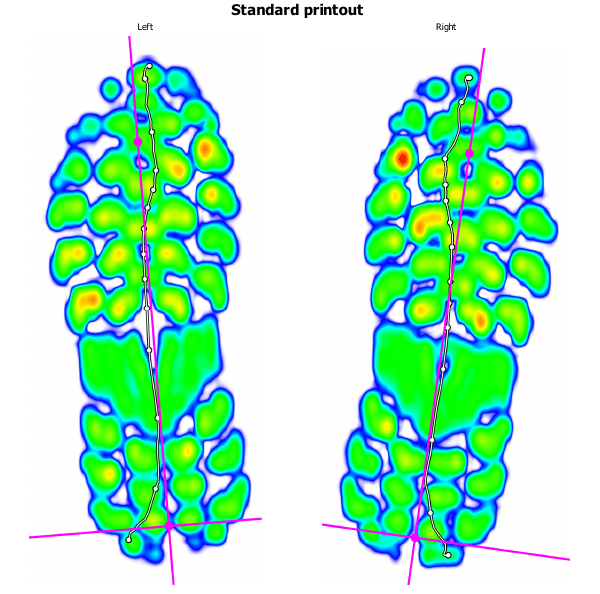
Running analysis
With the gait analysis done, we moved on to the running analysis.
mCell EMG muscle recruitment analysis
Unfortunately the EMG shorts only come in one (relatively small!) size, so it was a rather tight fit, but I managed to squeeze into them! These shorts have sensors throughout the material that feed into a pack which sits on the waistband, with a button you can press to create 'laps'. We did a walking, jogging and fast running lap to see how my muscle recruitment varied with the different speeds. Fascinating stuff!
Below you can see the muscle load in each phase, and at the bottom right, an overview of muscle recruitment. L = Left, R = Right, Q = Quad, H = Hamstring.
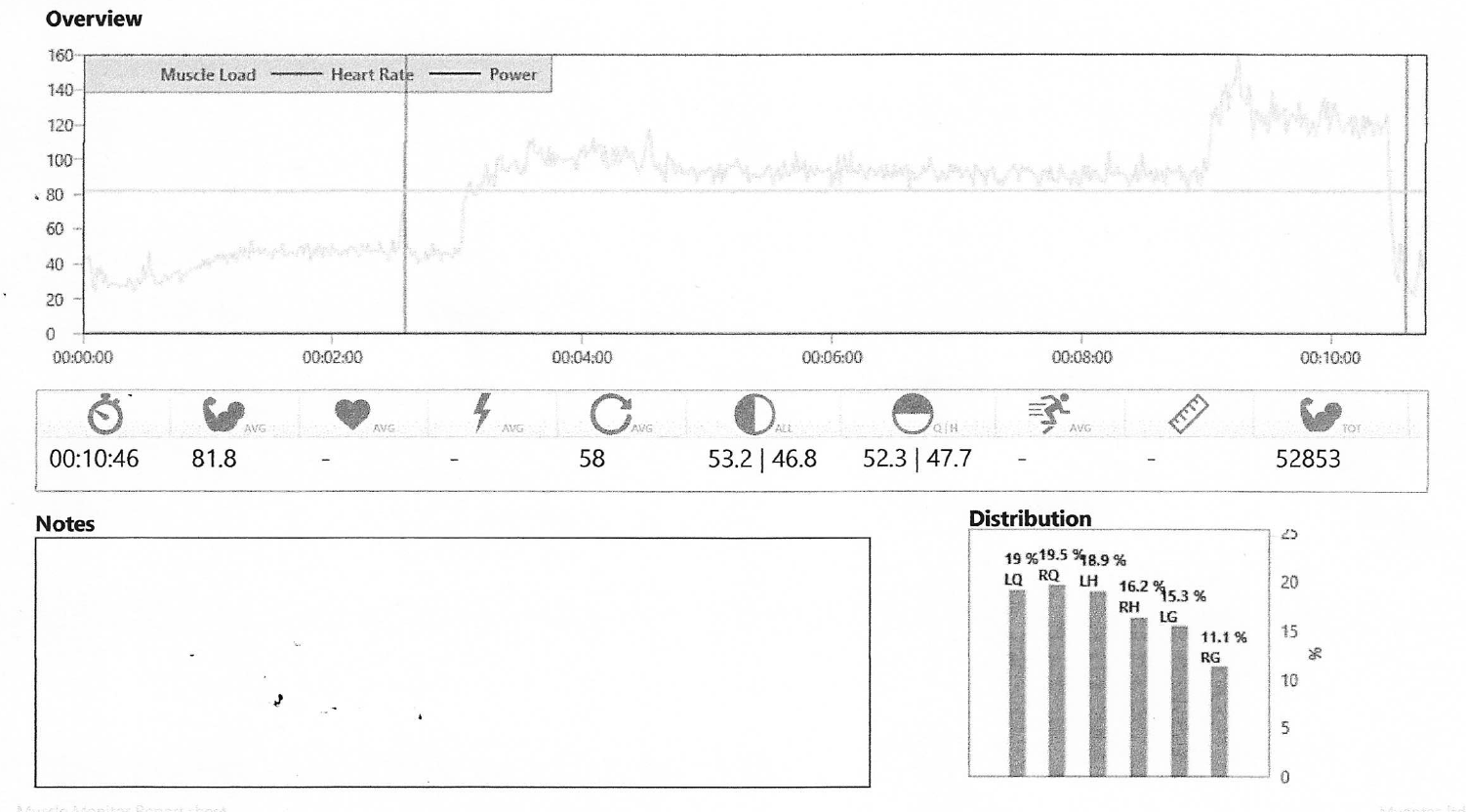
You can see from the distribution that my quads were dominant over the hamstrings and glutes - probably what was contributing to the hip flexor and quad pain on my longer runs - and that my right posterior chain (glutes and hamstrings) is significantly under-performing when compared with the left.
I have had problems with my right side before with IT Band syndrome and having torn my quad in a hockey injury, so it did not come as a surprise to me, but the contrast was quite significant.
Treadmill gait analysis
Next, we got onto the treadmill and I was asked to just run normally at a comfortable running pace that I could maintain for a while, so that we could gather a good amount of data.
The tech kit here consists of laser beams on either side of the treadmill which detect when your foot is moving through the different stages of the run, and video recording from both sides and from behind which could be paused and nudged forward/backwards and annotated.
The image below shows the different phases that we were looking for, and the durations for each phase.

Fascinating stuff!
Unfortunately one of the form issues that was found is not lifting my leg high enough in the flat foot phase, so some phases were not detected by the sensor because my great big canoes of feet never actually fully cleared the sensor, so some of the data was impacted by that.
Overall the data showed that my left to right is not far off being balanced when it comes to the phases, with just a small percentage each way.
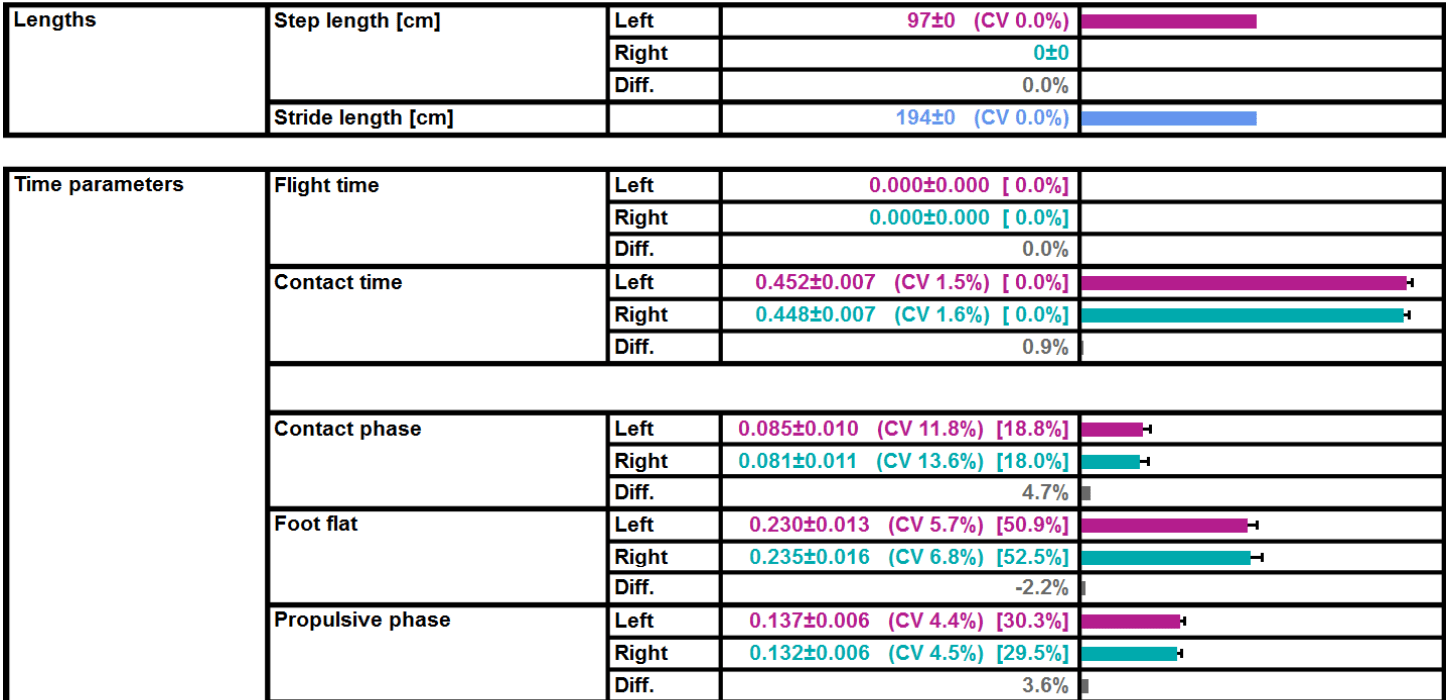
It got really interesting when we started to look at the video analysis.
Video gait analysis
During the treadmill running, Bob was taking footage of me from different angles which he could then review and analyse afterwards. It does feel a little weird having someone walking around with a video camera pointed at you, but you get used to it after a while!
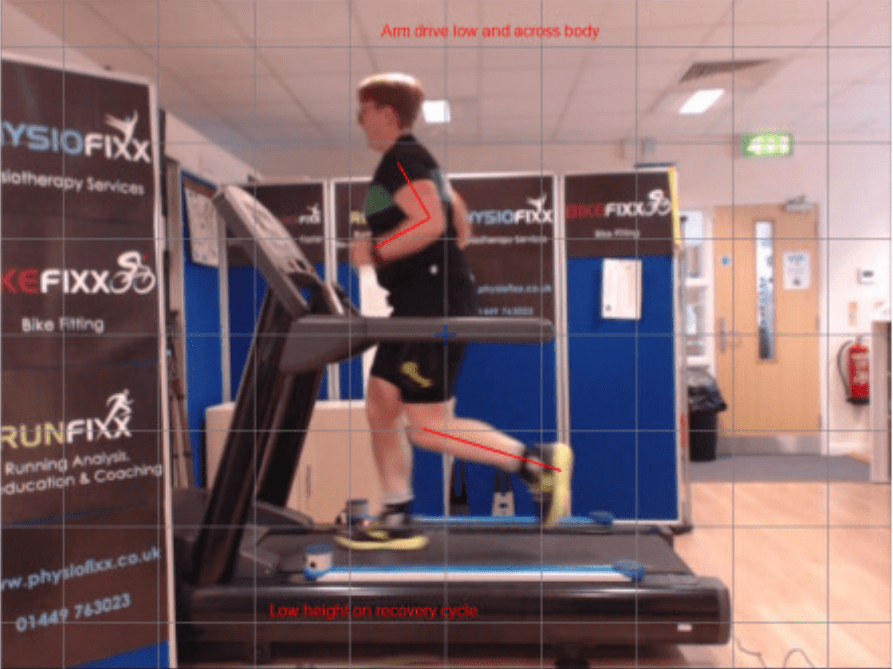
Here is a photo from when I am in the mid-stance phase, you can see that my arm drive is quite low, and it's coming somewhat across my body rather than forward and back, which reduces running efficiency. You can also see here the low height on the recovery cycle where the knee is coming backwards and the heel should be coming up towards the back of your hamstring, but I barely lifted my foot from the ground, reaching about 60 degrees when a minimum of 90 is what you'd be aiming for.
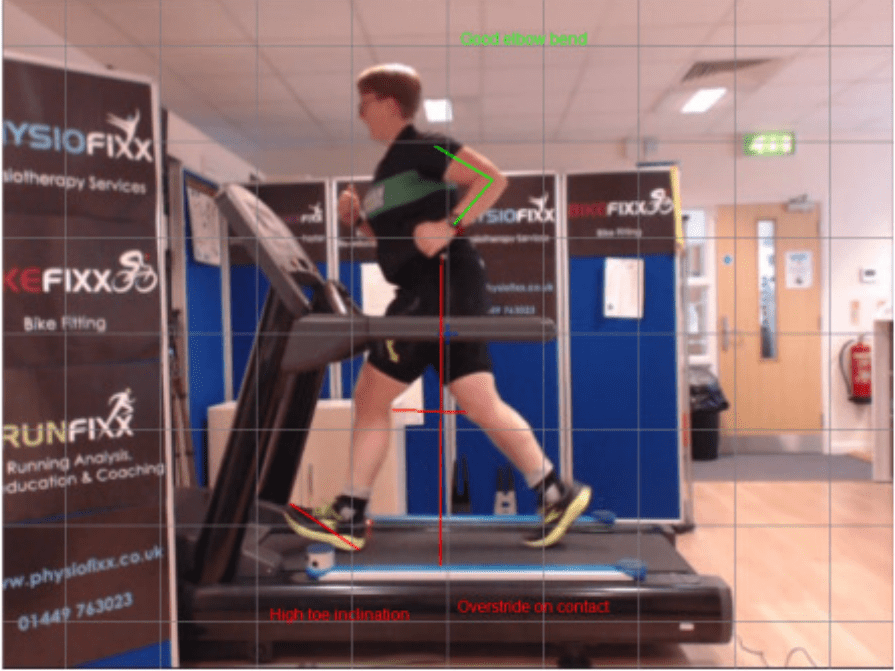
Here's where a lot of my problems stem from - although I have a good elbow bend in the upper body, when I land I have a very strong heel strike with my toes pointing skywards, which is effectively slamming on the brakes when it comes to the momentum you've gained through the previous cycle. Not only that, I'm also striding way too far forwards. The aim is to be landing underneath your hips but you can see the distance from the midline is quite significant.
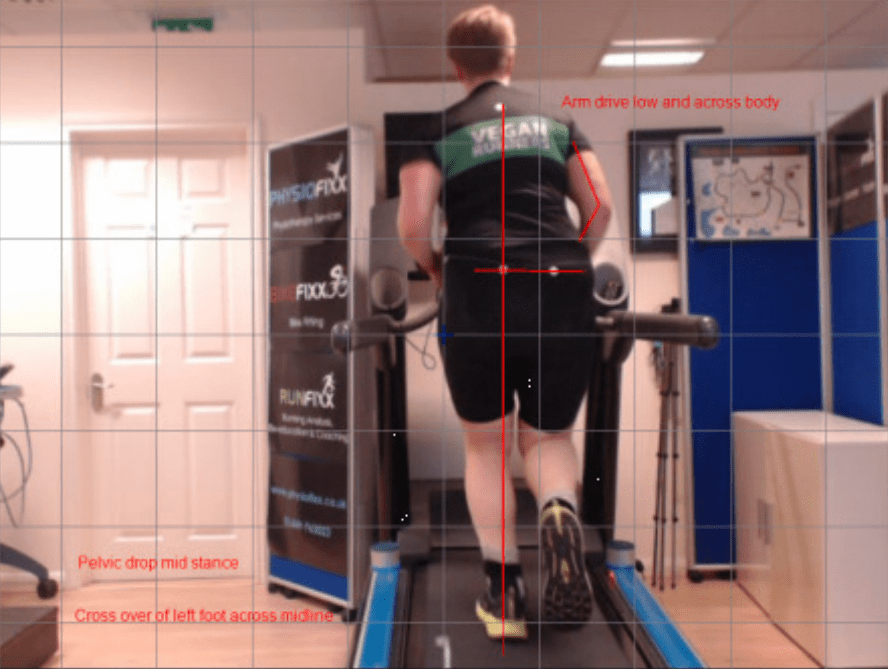
Here you can see me mid-stance on the left side, again the low arm drive and the fact that it's coming across the midline means less efficient running. You can see the two white dots on my pelvis show that there is a drop mid-stance, so my hip and glute muscles are not properly stabilising my pelvis through this phase. Also, my left foot is landing over the midline - a bit like if you try to walk purposely putting your foot over to the right, it means your body has to compensate to correct the drift.
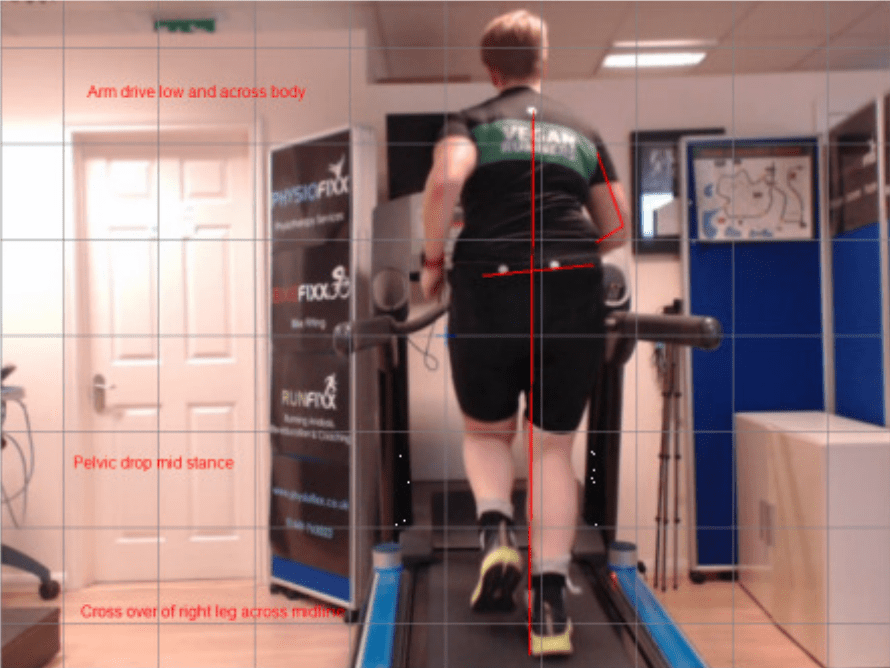
On the right side mid-stance, the pelvic drop is much more pronounced and there was a slightly less pronounced midline drift from my right leg.
I found all of this really fascinating and very helpful to be able to scroll back and forth through the recordings and actually see the muscular weakness playing out in my running form, and learn how this impacts you on longer runs.
What to do about it?
Well, unfortunately there is not really any quick fix for this kind of problem. It takes work to correct and re-learn how to use your body!
Some things were quite obvious, like needing to invest in new insoles for example, but which take a long time to introduce without causing problems for your body (I went for SOLE insoles, it took nearly 4 months to fully break them in to the point where my feet were not painful during runs!).
Movement re-patterning
Next, we started on what I affectionately term 'Run School' - learning how to run, and doing drills which help to fire up your neuro-muscular system to start making the right connections.
This started with some fun but incredibly challenging at times drills on the torture mat!
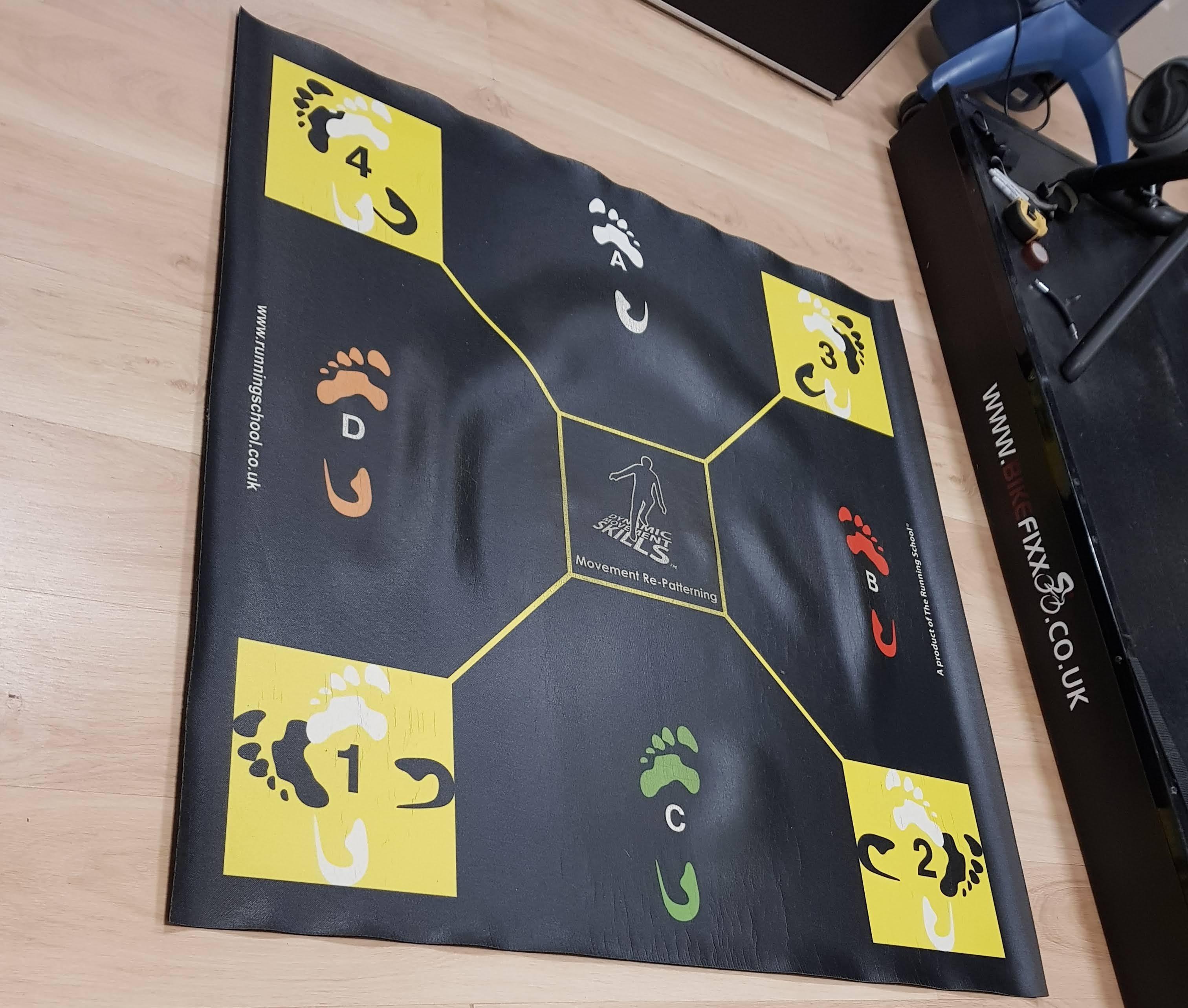
The goal with this mat is re-programming your mind and body into different habits. There are various drills and exercises that we did, mostly involving moving your feet quickly in specified directions - forward, backward, sideways. Also some exercises which involved lunging and leaning to work on balance.
I actually quite enjoyed this, and Bob suggested you can use these drills to get you fired up before a race if you're standing around waiting to get started, to get the muscles and the brain 'ready for action' which was a great tip. I use the drills we learned as a warm up most times I run now!
Learning to run with better form
After a few sessions on this we started to work on breaking down the actual running form into things we could focus on and try to change. We started with the arms, which at first felt very strange but as soon as I started getting back on the treadmill in the speed sessions on my training plan, made a whole lot of sense.
The idea with the arms is keeping them moving forwards and backwards, not chopping across your body, and up to your chin height and back behind you, rather than around the height of your hips.
Later, we moved on to look at the contact phase - planting the foot into the ground and scraping back, to activate the hamstrings and glutes, rather than - as I was doing - lazily activate the quads to do all the work! It took a while for me to 'get' the feel of this, but once I did it was like suddenly I 'knew' how to run like I had never done before (and my backside and hamstrings ached like it had never done before as a result!).
Putting the two together can be a bit comical, but I started out slowly by just doing the first 100m of each mile and then building up from there.
As I run quite slowly at this point, it's a bit difficult to fully apply everything I am learning, but it's already making a big difference and as a result I am managing much longer miles, hitting my first half-marathon distance just recently.
It's really interesting that whenever we take up a new sport, we often take lessons to learn from an expert how to do it properly, how to make sure we're using good form, but with running we just tend to throw on a pair of trainers and run how we think we should run.
I'm still working through the running re-education stuff and applying the learnings to my running, but without a doubt it has hugely improved my running form and really made me start to think much more critically about how I can be a better - and more efficient - runner! I'd highly recommend if you can attend such classes, it has been such a huge benefit!


